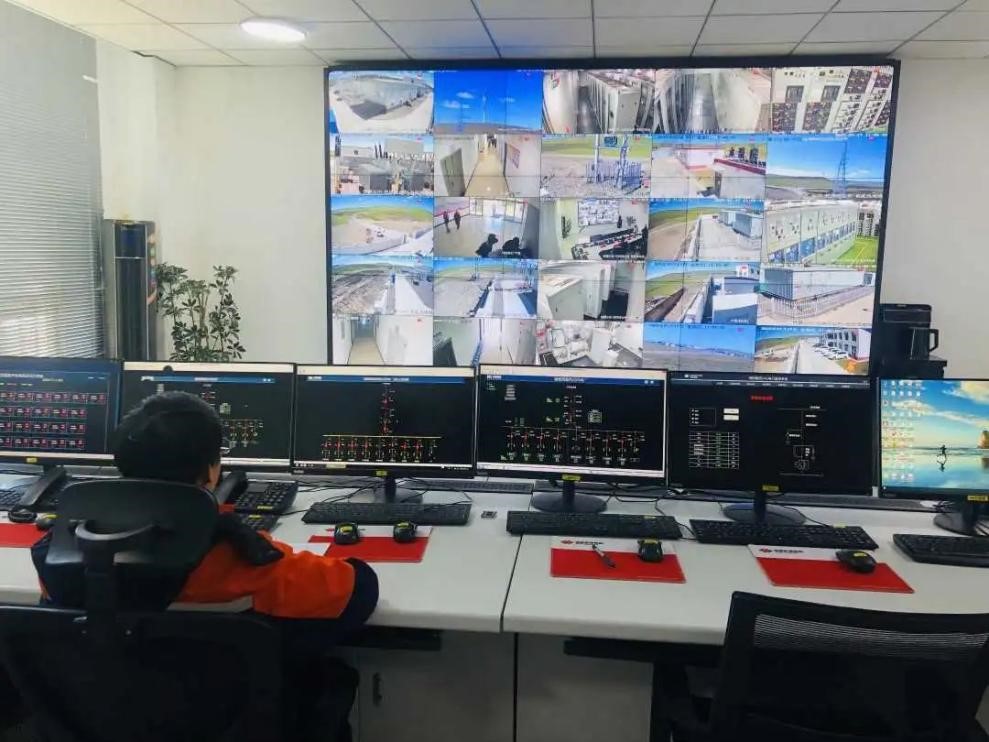




- BRNN
- BRI News
- BRNN News
- Database
Official Documents Polices and Regulations
Inter-government Documents International Cooperation BRI Countries
Business Guide Economic Data BRI Data
Trade
Investment Projects Latest projects
Cases - Content Pool
Perched on the Nagqu Plateau in China's Xizang Autonomous Region at an average elevation of 4,650 meters, fierce winds drive massive turbines at the Omatinga Wind Farm.
For 21-year-old maintenance engineer Chang Jianrui, daily duties involve ascending turbine interiors via an elevator before climbing nearly 20 meters on service ladders to conduct critical inspections and performance tests.
Despite Xizang's rich wind resources, as China's highest-altitude prefecture-level city, Nagqu historically faced severe grid limitations due to its extreme geography and climate. Winter Blackouts always happened in winter and winds often exceeded level 10.
The roaring winds, though considered as a resource, also posed major challenges for wind farm construction.

Photo shows the Omatinga Wind Farm. (Photo from the official account of CHN Energy Xizang Power Company Limited on WeChat)
In January 2024, the 100 MW Omatinga Wind Farm was put into operation in Nagqu by China Energy Investment Corporation. At its launch, it stood as the world's largest ultra-high-altitude wind power installation. The facility generates approximately 200 million kWh of clean electricity annually, sufficient to power 230,000 households year-round.
Beneath the turbines, Gen-Z technician Zhang Haoyu crouched to inspect low-lying vegetation. To minimize ecological impact on the plateau's fragile ecosystem, Zhang and his team have worked hard to restore grass cover around each turbine base. "We're not just here to light up homes. We're here to protect the environment," Zhang emphasized in an interview.
Youth drives the facility's operations: employees under 35 now make up over 84% of the Omatinga's workforce. Chen Yang, a fellow Gen-Z maintenance engineer originally from Sichuan's Neijiang City, represents this new generation. "We young professionals aspire to make meaningful contributions," Chen stated.
Late last year, a few turbine blades were damaged by lightning. Maintenance specialist Chen ascended nearly 100 meters on a suspended platform amid -20°C temperatures and high winds to conduct repairs with his team..
"My nose ran constantly from the wind, but we prioritized swift repairs to restore household electricity," This commitment reflects the team's guiding principle: "The more power we generate, the more the local communities benefit." This echos drives the young workforce to maintain seamless operations across turbines, grids, and substations.
How do they keep turbines running smoothly?
Initially, operators relied on visual checks. "If a blade stopped rotating, we'd drive to investigate immediately," Chang recalled.
Now, however, Omatinga Wind Farm uses an intelligent monitoring system. Its self-developed real-time diagnostic platform and cluster control system transmit blade performance and other data to a central control room. Power output is allocated by predictive algorithms.
"Now, the central control screen displays the status of all 25 turbines in real time, which saves a ton of time and effort," said Chang. These days, most potential issues are caught and addressed remotely; only major faults require on-site maintenance.
At 34, Kunsang Tashi ranks among the facility's most experienced team members. Since joining the industry in 2014, he has supervised maintenance while modeling high-altitude adaptation - reminding colleagues to hydrate and use supplemental oxygen when necessary."
Young technicians here demonstrate remarkable innovation, capability, and plateau resilience," Kunsang observed. "We encourage more youth, especially locals, to advance this legacy."

Photo shows the central control room of the Omatinga Wind Farm in Nagqu. (Photo from Science and Technology Daily)

Tel:86-10-65363107, 86-10-65368220, 86-10-65363106